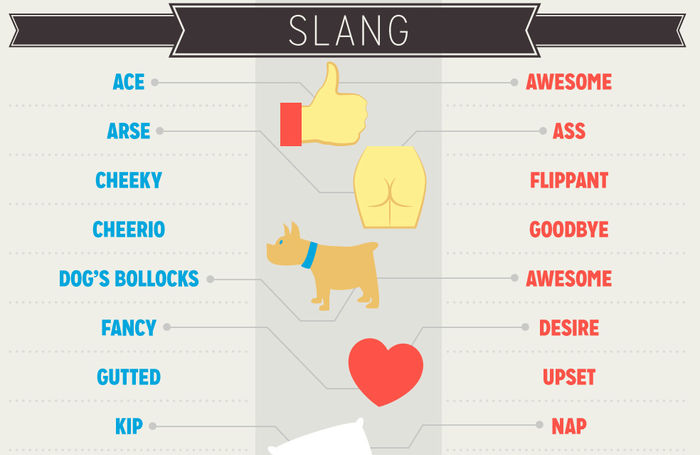в чем разница между moose и elk
Отличия британского и американского английского
Нет времени? Сохрани в
Каждый, кто когда-либо брался за изучение английского, обращал внимание на разницу в произношении в фильмах, музыкальных клипах или обучающих видео. Пары слов, имеющие одинаковое значение, но звучащие по-разному, разделены на два столбика: британский и американский.
Так в чем же разница между этими двумя вариантами? Являются ли они абсолютно разными языками или какой-то (не будем указывать пальцем) из них просто несовсем корректный? Как произошло такое разделение языка и каким образом это влияет на англоговорящее население сейчас — в нашей сегодняшней статье. Let’s go!
Из уроков истории мы знаем, что Америка и США в частности долгое время заселялись выходцами из европейских стран, местное население местами притесняли, местами просто истребляли, а вместе с поселенцами на территориях обосновывались и новые языки.
Масштабная колонизация Америки англичанами, наибольшая волна которой пришлась на 17 век, принесла в Америку английский, который начал приживаться на местные языки и новоприбывшие: немецкий, французский, испанский.
В связи с тем, что ко времени Войны за независимость в США больше 80% поселенцев были англичанами, основным языком независимого государства стал английский.
В целом нужно отметить, что язык нельзя назвать постоянной величиной, он бесконечно изменяется — появляются одни слова, другие стареют, возникают новые грамматические правила. Американский английский язык, отделенный от Англии тысячами километров океана и неразвитой системой коммуникации, перестал развиваться в ритме Британского, а начал изменяться самостоятельно в среде большого количества переселенцев из разных стран, что собственно и привело к той разнице в языках, которую мы наблюдаем сейчас.
Различия в лексике
Поселившись на новом континенте, англичане столкнулись с понятиями, которых не встречали на родине, начиная от климатических условий, флоры и фауны, заканчивая различными бытовыми нуждами, все сферы жизни требовали новых слов для их описания.
Некоторые слова адаптировались, некоторые перенимались из других языков. Так, слово «elk» в Британском английском обозначает «лось», и в Американском «изюбрь», для обозначения «североамериканского лося» Американцы используют слово «moose».
Если говорить о заимствованиях, то многим знакомая пара слов «employer» (работодатель) и «employee» (работник) знакомы нам именно благодаря заимствованным из французского суффиксам [ee] и [er] для обозначения субъекта и объекта действия.
Вот еще несколько наиболее распространенных примеров различия в лексике (за деталями вы можете обратиться к любому словарю, там всегда будет указано, какое слово чаще применяется в британском или американском английском):
flat (Br.) – apartment (Am.);
autumn (Br.) – fall (Am.);
lift (Br.) – elevator (Am.);
film (Br.) – movie (Am.);
trousers (Br.) – pants (Am.);
timetable (Br.) – schedule (Am.);
underground (Br.) – subway (Am.);
queue (Br.) – line (Am.);
hoover (Br.) – vacuum (Am.);
garden (Br.) – yard (Am.).
Легко ли учить английский
Различия в написании слов
При изучении английского многие из нас замечали нестыковки в написании самых простых на первый взгляд слов в разных источниках. Например, как же все же правильно писать «color» или «colour»? Ответ прост: «color» — американский английский, а «colour» — британский.
Такие различия в написании ведут начало от работ Ноа Вебстера над американским словарем английского языка, в котором он зафиксировал единые стандарты американского английского.
Вот еще несколько широко распространенных слов, написание которых иногда ставит в тупик изучающих английский:
British English – American English
programme – program;
aluminium – aluminum;
analyse – analyze;
catalog(ue) – catalog;
centre – center;
cheque – check (paid by a bank);
colour – color;
defence – defense;
dialogue – dialog;
enroll – enrol;
favour – favor;
fulfill – fulfil;
honour – honor;
jewellery – jewelry;
labour – labor;
litre – liter;
maths – math;
metre (measure) – meter;
neighbour – neighbor;
organise – organize;
pajamas – pyjamas;
paralyse – paralyze;
practise, practice – practice;
programme – program;
realise – realize;
skillful – skilful;
theatre – theater;
tyre – tire (on a wheel);
traveller – traveler;
whiskey – (Scotch) whisky, (Irish) whiskey.
Попробуйте ввести слова британского английского в Microsoft Word, и американская программа проверки орфографии подчеркнет большинство из них как слова с ошибками.
Различия в грамматике
С грамматической точки зрения можно сказать, что американский английский больше тяготеет к упрощению форм. Американцы не заморачиваются и не усложняют лишний раз предложения временами Perfect, даже с такими классическими временными маркерами как «just» (только что), «already» (уже), они употребляют обычный Past Simple, тогда как британцы посчитают такое употребление ошибочным и обязательно скажут такое предложение в Present Perfect.
Например, предложение «Он только что пришел» в британском варианте будет звучать: «He has just arrived». Американцы же сформулируют его как «He just arrived».
Многие также сталкивались с недоразумениями при изучении такого простейшего глагола как «иметь», ведь существует два вида его перевода «have got» (британский вариант) и «have» (американский вариант), оба они верны, но представляют собой разные варианты одного языка.
Кроме того, в американском английском стали все чаще появляться разговорные формы, который абсолютно не характерны для британского английского, такие как «I gotta» — сокращение от «I got to» (я должен), «I wanna» — сокращение от «I want to» (я хочу).
Различия в произношении
Самая большая разница между британским и американским английским как раз состоит в произношении и интонации, именно они подсказывают к какой национальности относится ваш собеседник. Как известно, типичной особенностью британского английского можно назвать опускание звука [r] после гласной.
Если же вам просто необходимо выговорить или хотя бы намекнуть в произношении на этот звук в таких словах как «girl» или «part», значит вы придерживаетесь американского варианта произношения. Кроме того, британский английский в целом характеризуется длинными гласными, которые сокращены в американском варианте, именно эта черта произношения слов делает британский английский таким аристократичным.
Еще один интересный пример — исчезновение звука [j] в американском английском в таких словах как «tune», «tuesday», из-за чего эти слова звучат как «toon», «toosday», тогда как в британском английском звук [j] сохраняется.
Репетиторы английского языка в Киеве Днепровский район
Заключение
Какой же вариант выбрать для изучения? Филологи и преподаватели не прекращают споров, какой английский необходимо изучать, ведь с одной стороны британский вариант можно считать классическим и мы просто обязаны изучать его, но с другой стороны, носителей американского английского гораздо больше, что дает нам большую свободу общения, собственно то, чего мы и хотим добиться, начиная изучать иностранный язык.
На самом деле, большой разницы в том, какой язык вы будете изучать нет, ведь носители обоих языков прекрасно понимают друг друга, а значит поймут и вас, так что без сомнений просто изучайте английский, а британские и американские преподаватели EnglishDom без проблем подкорректируют его до необходимого вам уровня. Good luck!
Moose vs Elk – What is the difference?
Moose and Elk are majestic animals that are distant relatives of deer. These animals are known for their massive size and huge antlers. Though moose and elk look similar to each other, they aren’t the same. Moose and elk are different species that have a lot in common. Due to which it can be quite tricky to identify them accurately.
So, what are the differences between moose and elk? The most notable difference between the moose and the elk lies in the shape of their antlers. Moose have large and flat antlers that can span 6ft between the tips whereas, elk have elongated and branched antlers. Also, moose are generally larger than elks.
Moose are larger than elks. The adult moose can grow up to 6.5ft tall (from hooves to shoulders) while weighing more than 300kg. Elks are usually 5ft tall and weigh less than 300kg.
Apart from these differences in their physical appearance, there are differences in their habitat, behavior, and diet.
In this article, we will have an in-depth look into moose and elk appearance, diet, habitat, and behavior and discuss the similarities and differences between a moose and an elk.
Moose vs Elk Comparison Chart
| Moose | Elk | |
| Kingdom | Animalia | Animalia |
| Family | Cervidae | Cervidae |
| Genus | Alces | Cervus |
| Order | Artiodactyla | Artiodactyla |
| Average Height | 6.5ft | 5ft |
| Average Body Weight | 360 to 600kg | 147 to 499 |
| Diet | Herbivorous | Herbivorous |
| Adapted to live in extreme winters | Yes | Yes |
| Shape of Antlers | Large and flat antlers | Elongated with many points protruding from the main branch |
| Lifespan | 15 to 25 years | 10 to 13 years |
| Conservation status | Least Concern | Least Concern |
| Found in wild | Yes | Yes |
Moose vs Elk Appearance
Moose and elk look almost the same except for the shape of their antlers and color of their fur. But if you look closely, you can see that they both differ in size too. In this section, we will have a look at the differences between a moose and elk based on:
Moose are the largest among the two. They can grow up to 6.5ft tall (from hooves to shoulders) and weigh a staggering 350kg on average.
Moose are also found to show a small degree of sexual dimorphism where the males tend to be larger than the females. For instance, an adult male can weigh a staggering 360 to 600kg while the females only weight around 270 to 400kg.
Elk isn’t as tall or heavy as the moose. An adult elk can be 4 to 5 feet tall from hoof to shoulder and weigh 147 to 499 kilograms.
It is important to note that the elk’s antlers can grow up to 4ft, making them appear taller than the moose. Similar to the moose, elk also shows a small degree of sexual dimorphism. Apart from the males being taller and heavier, the female elk lack antlers.
Antlers
The first thing we all would notice while spotting a moose or an elk would be their antlers. If you have seen them, you might also know that the antlers of the two look very different from one another.
Moose have large yet flat antlers that can span almost 6ft long from the edges. Though it may seem that moose use their large antlers for defending themselves against predators, it isn’t the primary purpose.
They primarily use their antlers for mating displays and to forage underwater for food. Moose grows their antlers during spring and summer and shed them during winter. It is important to note that the antlers’ size tells a lot about the age & health of a moose.
Apart from being used for self-defense, foraging, and as a symbol for mating, these antlers enhance their hearing abilities. Moose, in general, can rotate their ears easily, giving them stereophonic hearing ability.
In a recent study, it was found that the antlers of the moose act like an amplifier and that it can amplify sound by almost 20%.
Unlike the moose, the antlers of elk are elongated with many points protruding from the main branch. Though the elk’s antlers look different from that of a moose, they serve the same purpose, and both grow and shed their antlers at the same time.
Like the moose, elk shed their antlers during summer when their testosterone levels are at the lowest mark. Owing to the low levels of testosterone, the bone which connects the antlers to the skull deteriorates, and eventually, the antler falls off.
Hooves
In many parts of the USA & Canada, it is legal to hunt down moose and elk for their meat and other products. Whereas, in some places, it is legal to hunt one among moose and elk. In short, you must track down the right animal that you are going to hunt.
When it comes to hunting, the best way to identify the animal is by using its tracks. Moose have large hooves that are pointy at one end. Having pointy hooves can be attributed to the fact that moose don’t migrate much, unlike the elk.
Due to the pointy tips of the hooves, the tracks will have the shapes of elongated hearts. As said earlier, moose are heavier than the elk, which means that the tracks of the moose are going to be a bit deeper than that of the elk.
Elk are animals that travel in packs because of which the track would have prints of a heard of elk. With the onset of winter, elk can be seen traveling almost 100 miles down the mountains in search of food and habitat. These elk migrate back to the heights during the beginning of spring.
Due to elk’s migratory behavior, they have large and rounded hooves that help them traverse such long distances. Elk isn’t as heavy as the moose. They have a lighter footprint than the moose.
Another essential thing to note about elk is the fact they migrate in herds, which can be identified from the tracks that leave behind.
Because of extreme winters in the regions they live in, both moose and elk have thick fur to protect them from extreme winters.
The thick fur is, in fact, a double-layered coating with thick and long hairs on the outside and an inside layer of guard hairs.
This honeycomb structure helps the moose and elk keep the water out while they dive underwater in search of food. It is important to note that the thick fur starts shedding at the beginning of summer.
The only difference in the fur of a moose and an elk lies in its color. Moose have a darker fur than the elks and appears black.
Now that we have discussed their morphological characteristics, let us have a look at their social behaviors and habits.
Social Behaviour
As said in the previous sections, moose are solitary animals whereas, elk are not. Elk tends to travel in herds. The only time you would see a moose travelling with other moose will be either during the mating season or when the female (cow) travels with the calf.
Aggressiveness
Both elk and moose shows considerable levels of aggression. Many things can potentially make them stressed and agitated, such as being confronted by dogs, traffic, when they are hungry or tired, and most importantly, when humans get too close to them.
But that being said, they aren’t going to draw first blood. The best thing to do If you spot a moose or an elk is to maintain a safe distance from them and find an alternative route.
Similarly, if you spot a moose or an elk resting under a deck or up against your house, don’t try to chase them away or approach them. There are high chances for them to get aggressive and to attack.
Diet of a Moose and Elk
Both the moose and elk are herbivorous animals whose dietary patterns change with the climate. Though they are both herbivorous, the way the forage and the food that they eat differs.
The most notable difference between the dietary pattern of two lies in the fact that moose browse whereas, elk graze. Moose are choosy eaters whereas elk aren’t.
Being a big animal, moose needs a lot of energy. Most of the energy is derived by eating forbs, non-grasses, and fresh shoots from trees.
It is interesting to note that though they derive most of the energy from these plants, they still take the effort to dive into swamps and other water bodies to consume the aquatic plants.
Moose are animals that need sodium in high quantities, and they rely on the aquatic plants for sodium. During winters, moose can be seen licking on the salt that is sprinkled on the roadways to melt the ice.
Elk too has a similar dietary pattern as that of a moose. Unlike moose, elk tends to most of their feeding in the mornings and evenings. Being ruminants, elks need to rest after consuming food in the morning and evening for the food to digest.
Can Moose and Elk swim?
Yeah, contrary to what most people say, moose and elk are excellent swimmers. In fact, they can both swim within days after their birth. It is interesting to note that in the wild, moose, and elk can be seen swimming across adjacent islands in search of better foraging ground and for other reasons.
In this section, we will have a look at the most common reasons as to why moose and elk swim.
For the aquatic plants
As said earlier, moose and elk are animals that need high quantities of sodium in their diet. Owing to which they dive underwater to come up with the aquatic plants that are rich in water.
It is essential to keep in mind that though they are excellent swimmers, they are still mammals and cannot breathe underwater. So they dive into the water by holding the breath and closing their nostrils using a specialized membrane.
Moose and elk use their huge antlers to uproot the plants and surfaces with it. Foraging for aquatic plants can be mainly seen when winter is about to be over. When the ice starts melting, moose and elk dive into the water for food.
Stress relief
If you have seen a moose or an elk, you might have noticed their slender legs. Being heavy animals their slender legs would experience a lot of pressure that can eventually lead to arthritis or osteoporosis.
Some times after an exhaustive journey or run, they can be seen standing in the water doing nothing. By doing this, they are taking the stress out of their legs giving them better protection against arthritis and osteoporosis.
To evade the predators
Though moose and elk are huge, they aren’t safe from the predators. For them, evading predators by running is not a feasible option. Moose and elks cannot outrun their predators owing to their staggering body weight. For them, the best way to evade predators is to stay in deep waters.
Did you know that both the moose and elks are crucial for the sustenance of the aquatic ecosystem?
One of the vital nutrients needed for the sustenance of life on the planet is nitrogen. Due to the extreme winters in the natural habitat of a moose, plants rarely have any access to nitrogen.
When the moose dives underwater in search of food they disturb almost 100 square meters of the lake bottom. This, in turn, helps in better nitrogen distribution.
Other than this, it is estimated that a single moose and elk can defecate almost 80 grams of nitrogen in a day. This adds up to 40kg of nitrogen in a year deposited by a single moose or elk.
It is this nitrogen that aids the growth of plants in the geographical region moose and elk are found in.
About Me
Hi, I am Elise McDonald, a wildlife blogger, and author. I’ve been working with the National Wildlife Federation for the past five years. I have been fascinated by our natural world and am here to share that wonder with you. As an Amazon Associate, I earn from qualifying purchases
Elk vs Moose, Differences, How to Tell, a Quick Guide
It’s common for some animals to be misidentified or mixed up with similar species. Especially when it comes to animals like elk vs moose, even seasoned wildlife watchers can find it hard to differentiate from a distance.
This is one of the reasons why every year hunters accidentally shoot moose – thinking it’s an elk.
So to avoid any confusion, this article will give a clearer understanding of an elk vs moose, the major differences, with images to support it.
Let’s start with the quick reference answer, then we’ll get into more detail.
Elk vs Moose, what’s the difference? Elks are smaller and light brown in color, with narrow, pointed antlers. A moose is large and black with flat, broad antlers. Moose have a more horse-shaped nose and skin under the neck, elks have slender snouts. Elks live in groups and avoid humans, moose are solitary animals, unafraid of humans.
Here’s a graphic representation of both elk vs moose, so you can see the visual differences, including average height (male and female) and average length…
Here’s a table highlighting more information and differences regarding elk vs moose
| Elk Male | Elk Female | Moose Female | Moose Male | |
| Avg Height | 1.3m | 1.5m | 1.4m | 2.1m |
| Avg Length | 2.1m | 2.4m | 2.4m | 3.2m |
| Avg Weight (lb) | 710 | 730 | 840 | 1200 |
| Species | Cervinae | Cervinae | Capreolinae | Capreolinae |
| Color | Brown / Golden | Brown / Golden | DkBrown / Black | Dk Brown / Black |
| Behavior | Pack/Timid/ Quick | Pack/Timid/ Quick | Solitary/ Slow | Solitary/ Slow |
| Aggression | Very Low | Very Low | Low | Low |
elk vs moose General Information Table
Let’s now take a look at the taxonomic differences…
Elk vs Moose – taxonomic differences
Starting with the basics, most confuse elk with a moose due to their taxonomic differences.
Firstly we should state that both elk and moose are part of the same group of mammals called the Cervidae Family.
All the animals in this family, including an elk and moose, are essentially deer, but they’re known by different names.
All the animals in this family are categorized into Cervinae and Capreolinae. So let’s see what both these categorizations are – and where elk and moose fall into these categories.
Cervinae
This categorization of deer is known as the old world deer, although now many species live in other parts of the world.
Capreolinae
These two deer groups are differentiated based on their bone and ankle structure.
When looking at elk vs moose, this is one of the ways an elk is technically differentiated from a moose too. So, therefore, an elk falls into the category of Cervinae and a moose falls into the category of Capreolinae.
Elk vs Moose – Appearance
Elks are medium-sized when compared to a moose. On average, an elk weighs about 710-730, so a bull elk weighs half that of a bull moose.
A deer is very small when compared to an elk, whereas an elk is smaller when compared to a moose.
Elk has antlers that are spindly and pointed, more akin to the antlers of a deer. Elk are mostly light brown or could appear more of a golden or a pale yellow color.
The snout of an elk is narrow and it has no visible “bell” shaped skin under the neck area.
Much like deer, it’s common to see elk sprinting across the road when driving.
Moose are actually pretty large when compared to an Elk. They weigh about 840-1500 pounds on average.
The weight of a moose tends to be closer to the size of a horse. A bull moose on average weighs about 1200 pounds, which is about twice the weight of an elk.
It also has antlers that are broad and flat. However, the antlers of young moose don’t actually appear flat, making it easier to mistake it for an elk.
A moose is a mostly dark brown, which may appear black sometimes. It also has a very large, long, wide, and bulbous nose, more akin to a horse. With a visible “bell shape” under the throat.
A moose has a flap of skin called “dewlap” that hangs from the chin area.
Elk vs Moose – Territory
Moose prefer to live in and around rivers and lakes and places that are abundant in aquatic vegetation and willows.
They’re less commonly seen on the eastern side of the US, especially among areas like parks and rocky mountains.
These territory patterns don’t change much over the seasons, so you should be able to see and encounter moose all year round.
In contrast to moose, elk can be found in areas like parks and foothills. Especially when winter approaches, as elk tend to move down to park areas, where they can be found in abundance.
These include meadows, rivers, rocky areas, foothills, and general fishing locations are all good places to find elk.
Elk vs Moose – Behavior
Moose is actually a more common species than elk, one good way to identify moose and elk is through their vastly different behavior when approached by humans.
Elk will actively avoid humans, and flee from people when they see them.
By huge contrast, moose don’t flee, rather they take their time, walk slowly, and calmly. This makes moose much easier to hunt than elk.
Elks gather in herds and prefer living in groups. By contrast, moose are more solitary animals and they prefer living alone by themselves. So even while walking or hunting for food, elk gather in herds and travel, whereas moose travel alone. Moose rarely travel in groups.
But the times when you will see a small family group of moose, are when the adult moose are escorting and caring for their young.
How hunters identify elk and moose
Many hunters identify elk and moose by examining their tracks.
This is one of the most common and easiest ways used by the hunter to distinguish an elk from a moose.
Most hunters say that the tracks of elk are around three inches wide and four-inch long. Whereas the tracks of moose are deeper and longer when compared to an elk.
Also when examining the tracks, the solitary and individual living habits of moose vs elk are more obvious.
The track marks of elk tend to show evidence of multiple tracks as the animal moves in herds, whereas for a moose it’s just track marks of one animal – possibly around 2 to 4 during mating season.
Even the bodyweight of these two animals helps to identify whose footprint they belong to.
As a moose weighs much more than elk, the larger body of a moose makes its footprints sink deeper into the soil than an elk.
In contrast, the footprints of elk tend to sink lighter on the soil. However, this depends on the type of soil and the terrain in general, it’s obviously more easily visible on wet soil or softer ground.
Even the tip of the hooves of these animals is used for identification.
The tip of an elk’s hooves is blunted because they travel long distances. Whereas the tip of a moose’s hooves are pointed because the animal has a different migratory pattern.
Moose also have heart-shaped hooves, whereas elk has hooves that are more pointed and teeth shaped.
Learning resources
We’ve found the ideal resources to continue your learning at home and at school on amazon. Help support our efforts for wildlife causes and keep this site working for nature. Amazon also donates to wild-life related charities!
Perfect binoculars for any user, these foldable pocket binoculars are compact and powerful enough for kids and adults to take anywhere when observing wildlife. They get our approval for price and quality.
People love this device for capturing wildlife and the anticipation of discovering new footage every day! Great for capturing wildlife you might not normally see. This is our favorite for price and the features.
So finally
We hope this has provided you with the answer to the question elk vs moose. There are some obvious differences, however, from a distance, these differences can sometimes be blurred. So do check out our binocular choice above so you can correctly identify wildlife.





